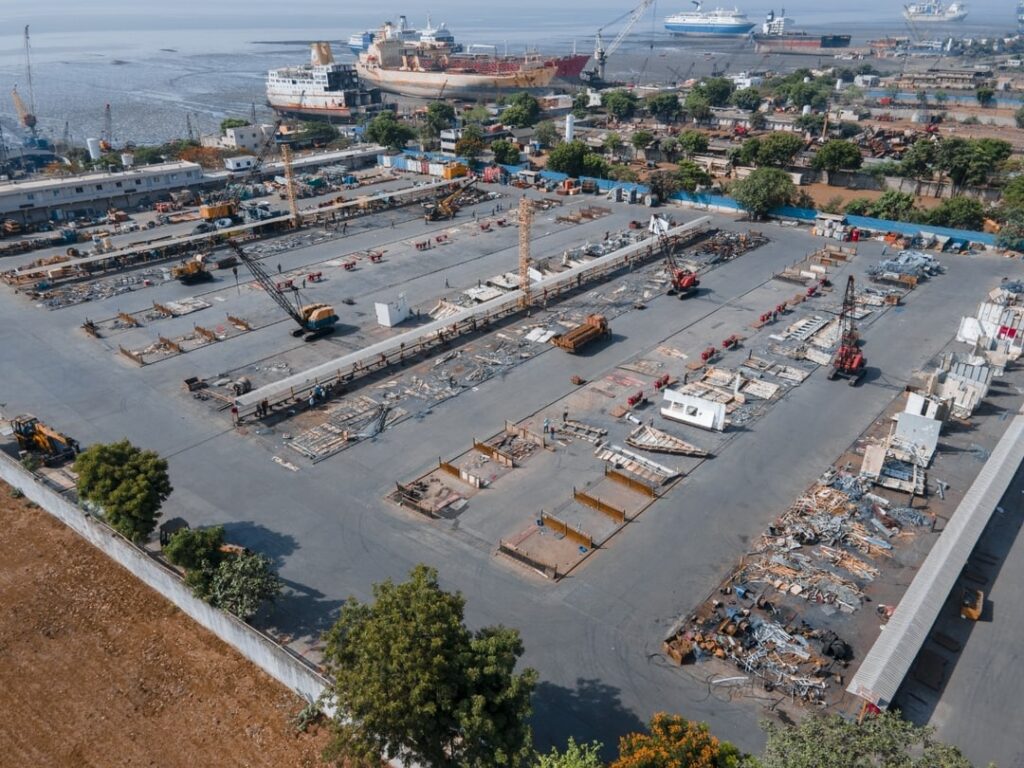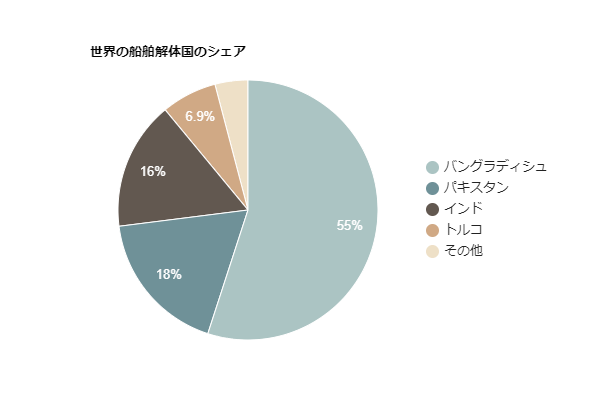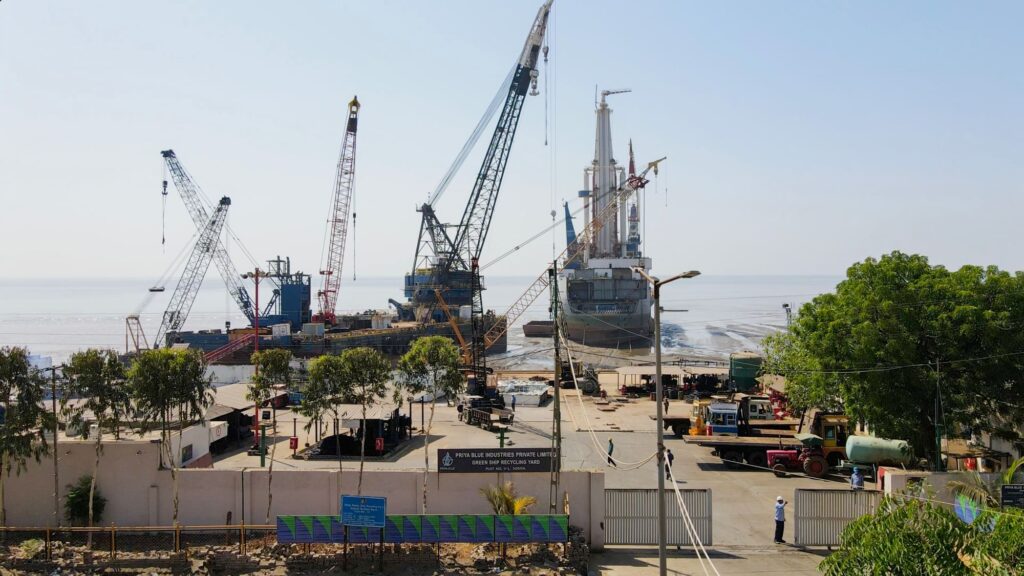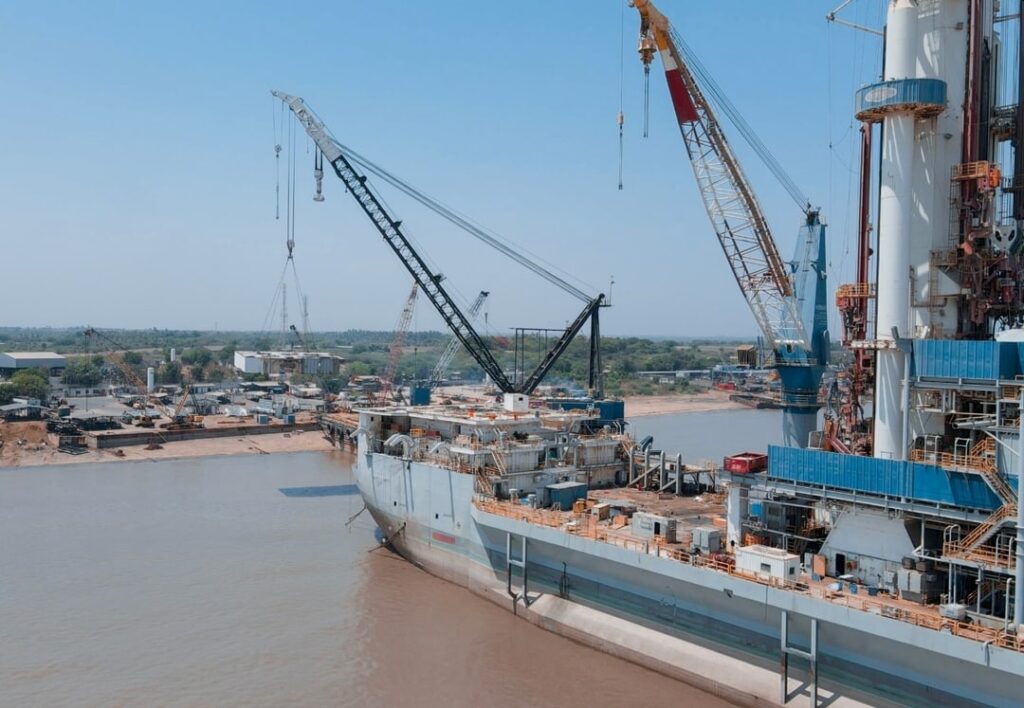
〆Aim to Establish Ship Dismantling Yards in Japan
(Text by Hirofumi Yamamoto)
■Blast Furnaces: The Powerhouse of Steel Production
Blast furnaces have long been lauded for their ability to produce high-quality steel from iron ore, enabling the efficient and large-scale production of premium steel materials used in industries such as automotive manufacturing. However, electric arc furnace (EAF) manufacturers have struggled with impurities found in recycled steel scrap. These impurities have limited EAFs to producing mainly general-purpose steel.
■Japan’s Maritime Fleet: A Potential Solution?
Steel industry experts highlight the historical advantages of blast furnaces. As Japanese steel manufacturers increasingly shift from blast furnaces to electric arc furnaces, a critical question emerges: can the issue of impure steel scrap be resolved?
The answer may lie in shipbreaking.
Many researchers exploring the use of steel scrap for EAFs suggest that ship scrap could be the key to solving this problem. According to the Japanese Shipowners’ Association, as of mid-2022, Japan’s merchant fleet (comprising ships owned by Japanese shipping companies and owners, each over 2,000 gross tons) numbered 2,196 vessels. This ranks Japan third globally, behind Greece and China.
Additionally, a report by British ship valuation company VesselsValue indicates that Japan holds the world’s highest ship asset value, including high-value vessels such as LNG (liquefied natural gas) carriers.
Historically, the maritime industry has shown little interest in scrapping ships over 20 years old. The terms “dismantling” (the process of recovering unusable scrap) and “demolition” (the process of recovering reusable materials, such as in shipbreaking) have often been conflated.
As Japan’s steel industry transitions to electric arc furnaces, focusing on shipbreaking could address the long-standing issue of impurities in steel scrap, paving the way for a new era of high-quality steel production from recycled materials.

■The Implementation of the Hong Kong Convention
One key event is the enforcement of the Hong Kong Convention in June 2025. Officially known as the “Hong Kong International Convention for the Safe and Environmentally Sound Recycling of Ships, 2009,” this treaty holds significant implications for the global shipping industry.
In June 2023, Bangladesh, a major shipbreaking nation, and Liberia, a major flag state, ratified the convention, fulfilling the conditions for its enforcement.
With the enforcement of the Hong Kong Convention, shipowners will be required to maintain an inventory of hazardous materials on their vessels. Additionally, shipbreaking yards will need to develop a “Ship Recycling Facility Plan” to demonstrate compliance with certain safety and environmental standards.
The ClassNK (Nippon Kaiji Kyokai), the Japanese maritime classification society, has played an active role in this process. From June next year, shipbreaking in India and Bangladesh will not be possible without ClassNK certification.
According to the Japan Shipowners’ Association, as of 2021, the leading countries in ship dismantling were Bangladesh with 8.16 million gross tons (55% market share), Pakistan with 2.69 million gross tons (18%), India with 2.39 million gross tons (16%), and Turkey with 1.02 million gross tons (6.9%). These top four countries accounted for approximately 96% of global ship dismantling.
In the maritime industry, selling an old ship to another owner without dismantling it is known as “selling a live ship.”
Many shipowners anticipate the sale value of these live ships, investing in and financing vessels with the aim of ultimately recovering their investments.
Typically, these live ships operate in regions outside the developed world for several years before being sold to India or Pakistan for their scrap value, known as “light tonnage.”
The phrase “ship graveyard” aptly describes the current state of shipbreaking, which has long been considered “disposal” in Japan.
Commenting on this situation, a scrap iron recycling professional remarked:
“Ship plates are traceable to the steel manufacturer, and they come with a detailed composition chart. The low level of impurities in the steel makes it exceptionally suitable as raw material for electric arc furnaces.”

■Towards the Construction of Circular New Ships
October 2023, Singapore.
The spotlight at the “Ship Recycling Forum,” hosted by the British maritime trade paper TradeWinds, was on the ship dismantlers from Bangladesh, India, Pakistan, and Turkey.
They all shared a common sentiment:
“The demand for high-quality scrap metal is extremely high in our countries. When the supply of scrap metal from the United States and Asia decreases in the near future, we hope to import it from Japan.”
As electric arc furnace (EAF) conversion progresses, ship scrap metal is not merely being disposed of; it is positioned as the largest resource for domestic recycling in Japan.
Scrap metal is also a valuable resource that can be immediately converted for military use in times of emergency. The memory of temple bells and kitchenware being requisitioned for war efforts during wartime remains vivid in the minds of the Japanese people.
Can’t Japan establish ship scrap yards?
With the shift towards EAF, this question is increasingly being heard within the maritime industry.
Dismantling large cargo ships and tankers exceeding 200-300 meters in length can only be done in shipyard docks. “Shipyards are places for constructing new ships, not for dismantling,” remarked a representative from a shipbuilding company.
The pride of shipbuilding companies lies in constructing new vessels. There is no dispute about that.
However, the biggest challenge currently faced by Japanese shipbuilders is the price of thick steel plates used in new ship construction. While EAFs are not yet producing shipbuilding-grade thick plates, imagine if it were possible—and if the raw material for these EAFs were ship scrap metal.
In this scenario, thick plates manufactured by steelmakers are used in ships that sail for over 20 years and are eventually dismantled in Japan. The ship scrap metal is then recycled as raw material for EAFs, and reborn as thick plates for Japanese shipyards.
This would enable the construction of the world’s first completely circular new ships.
New ships built by Japanese shipowners using truly green steel would represent the circular future Japan aims for and could become a source of national pride and a globally acclaimed technology.

【船舶スクラップが日本を救う】
(中)日本で解体ヤード建設目指せ
「高炉は鉄鉱石から鋼材を製造するので自動車などに使う高級鋼材を大量、効率的に生産できる。電炉メーカーが長らく悩んできたのは市中の鉄スクラップに混じる不純物だ。この不純物のために汎用(はんよう)鋼材が中心になっている」
■船舶保有世界3位
鉄鋼関係者は高炉の歴史的な優位性についてこう語る。
現在、日本の鉄鋼メーカーが相次ぎ高炉から電炉への転換を表明している中で、この鉄スクラップの原料問題を解決できないのか。
船舶スクラップにこそ、その解決の可能性がある―。
現在、電炉用に鉄スクラップの利活用を研究している多くの関係者がこう指摘する。
日本船主協会によると、2022年央時点で日本商船隊(日本の海運会社、船主の実質的な保有船、2000総トン以上)は2196隻である。この数字は世界首位のギリシャ、第2位の中国に次いで第3位の保有隻数である。
英船価鑑定大手ベッセルズ・バリューによると、LNG(液化天然ガス)船など高付加価値船を含めた船価価値では日本の船舶資産は世界1位という報告もある。
長らく、海運業界では船齢20年以上を過ぎた老齢船のスクラップについては関心が薄かった。